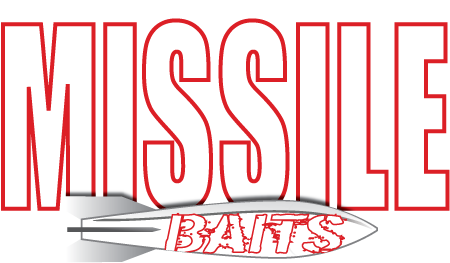How Do You Make Soft Plastics?

Many people have asked me over the years, “how do you make soft plastic fishing lures?” The answer is twofold. If you are making them one at a time in your basement, it is not that complicated. If you are making them by the thousands to sell all over the world, it is a little more complicated.
Making them at home
There are a number of places that sell little single shot molds of soft plastic lures. You are confined to shapes that the mold makers have. Do-It Molds and basstackle.com have lots of choices to check out on bait shapes. Places like Barlow’s and Lure Part Online can get you the supplies you need to get going. Grab yourself a Pyrex container and an old microwave and you have all you need to make yourself a little supply to fish with. This would not work for making any real amount to sell.
Making them on a larger scale
Here at Missile Baits, we do not manufacture our soft plastic baits. There are options for companies. I know of at least 5 companies that manufacture soft plastic fishing lures for other companies. Missile Baits uses a company in Georgia that has been making soft plastic lures for over 30 years. They know what they are doing and they do it on a large scale. They have amazing production capabilities and great quality control. We let them handle our production.
Determining the shape to produce is wide open. Every major soft plastics manufacturer has a number of “house” molds to use if you choose. These are generally generic shapes of popular soft plastics already on the market. This is the easy option because a company does not have to buy a production mold. Production molds cost between $5,000 and $10,000 depending on various bait shape factors. Missile Baits has never used a house mold.
The whole reason for starting Missile Baits was to create baits that I could not find on the market and needed on the professional bass tournament trail. I draw each bait out on graph paper and add the exact dimensions. That drawing goes to a mold maker.
Missile Baits has used a few companies to make our molds over the years. There are only a few to choose from. Once the mold maker puts the drawing into their CAD (Computer Aided Design) software, they cut a single shot mold to check a prototype. This little mold is sent to our manufacturer. They shoot us samples using the exact plastics formula we intend to make the bait in. We get the samples, inspect them, and fish them! Often times, we go through two or three versions before we get it just right. Once the prototype sample is approved, the mold maker makes the production mold.
Our soft plastics manufacturer gets the production mold and waits for our PO (Purchase Order). We send our manufacturer exact specs for the softness, salt content, color, flake, and more so the baits come out exactly like we want. The manufacturer also has a system to bag the plastics in a very fast and efficient manner. We actually give the manufacturer instructions on exactly how we want each bait model bagged. This is a big deal for me because many soft plastics get ruined by incorrect bagging.
Other companies do their own manufacturing. They do this to save costs and control their inventory better. Missile Baits feels that manufacturing soft plastics would be like starting another whole business. We leave that part to the experts so we can focus on design, education, and promotion of the baits we have created. Other companies do other procedures differently than Missile Baits for various reasons as well.
Soft plastic fishing lures are not super labor intensive to manufacture. US manufacturing can be done in a cost that is very competitive concerning final cost. Keeping manufacturing domestic also reduces fill times and can help with not being out of inventory. Most companies in the soft plastics business do their manufacturing in the United States for these reasons.
Whether you want to make a few baits in your basement or start a soft plastics company, there are plenty of options. I love looking at new designs and trying to figure out ways to create better action, better function, and better durability. Bass fishing is my life and soft plastics is a huge part of any serious angler’s tackle box.
